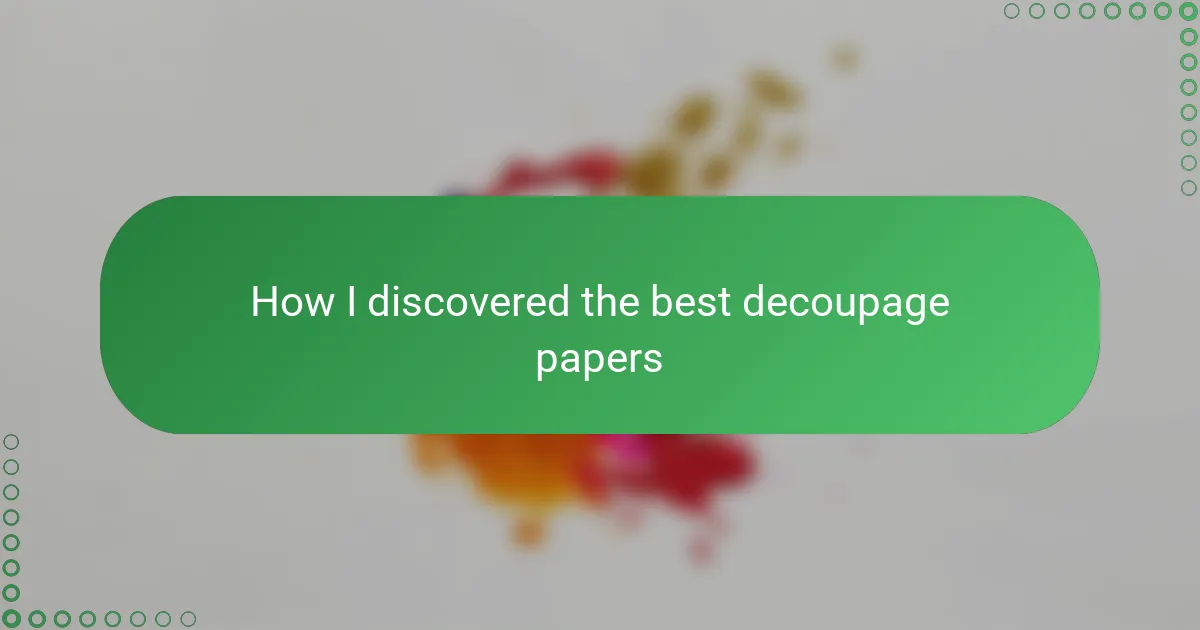Key takeaways
- Handmade paper crafts foster a deep connection with materials, promoting mindfulness and creativity in the crafting process.
- Quality decoupage papers are lightweight yet durable, allowing for intricate designs without tearing or fading.
- Choosing the right papers is crucial for successful crafting, with textures and patterns igniting inspiration and storytelling.
- Decoupage enables transformative projects, creatively repurposing everyday items into unique, personalized art pieces.
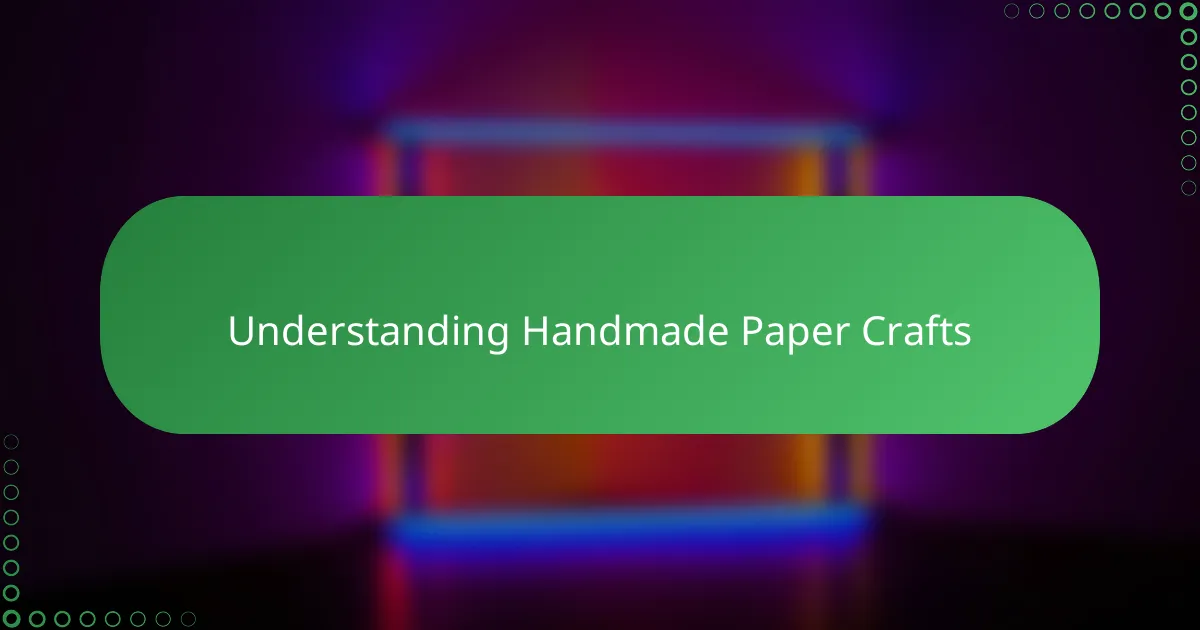
Understanding Handmade Paper Crafts
When I first dipped my toes into handmade paper crafts, I was struck by how each sheet seemed to carry a story—an imperfect beauty that machine-made paper just couldn’t capture. Have you ever noticed how tactile and alive handmade paper feels? That texture, those subtle variations, make every project feel truly one of a kind.
Working with handmade paper taught me to slow down and appreciate process over perfection. It’s not just about crafting; it’s about connecting with the material, understanding its fibers, how it holds paint or glue, and how it reacts under your fingertips. This connection changes the way you approach each creation, turning it into a heartfelt expression.
I often ask myself, why do I keep returning to handmade paper crafts? It’s because they invite a kind of mindful creativity, where every cut, fold, and glue dot feels intentional. This depth of engagement makes the finished projects more meaningful, almost like a piece of my own journey embedded in the paper itself.
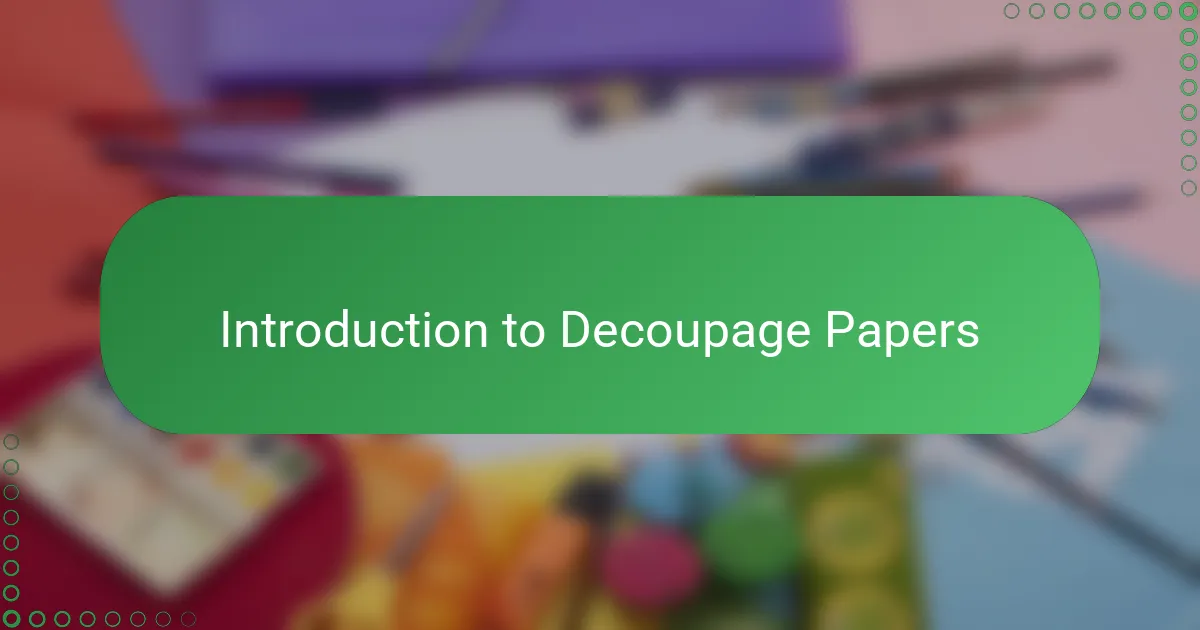
Introduction to Decoupage Papers
Decoupage papers first caught my attention because of their delicate patterns and smooth finish, which contrasted beautifully with the rough, textured handmade papers I was used to. Have you ever wondered what makes certain papers perfect for layering and gluing without tearing or warping? That’s exactly the magic decoupage papers bring—they blend flexibility with visual charm.
When I started experimenting with decoupage, I realized these papers are more than just decorative elements; they’re storytellers that add depth and personality to my crafts. Their lightweight nature allows for intricate designs, making each piece feel like a small work of art waiting to be revealed.
What surprised me most was how the right decoupage paper could elevate a simple project into something extraordinary. The variety in textures and prints offers endless possibilities, encouraging me to explore new themes and techniques with confidence and creativity.
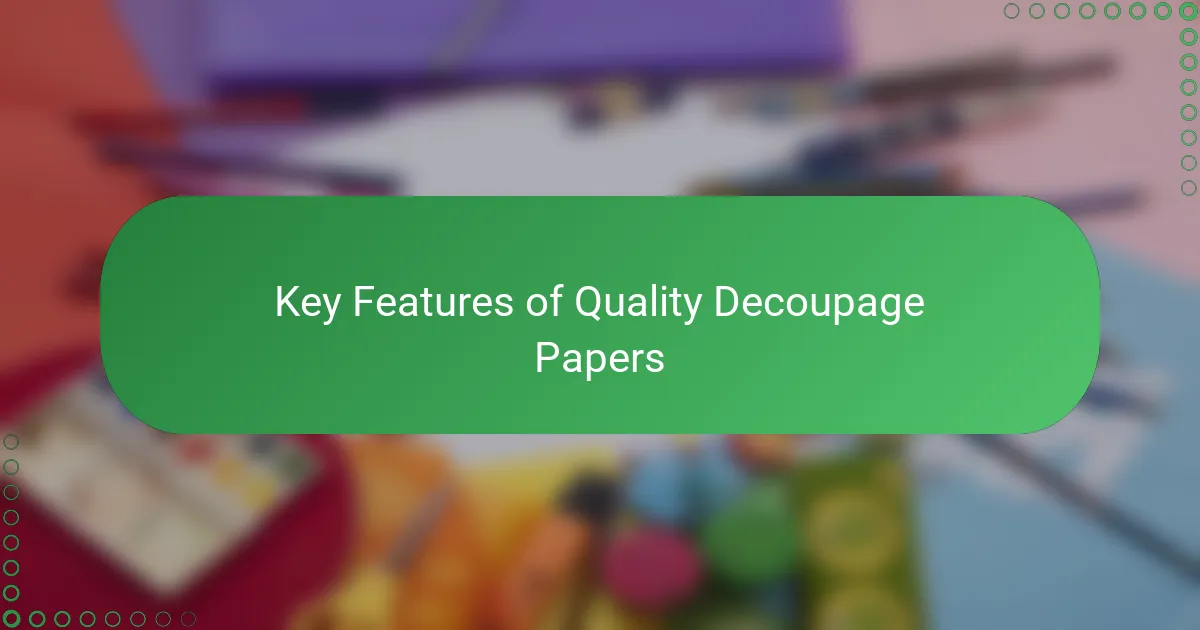
Key Features of Quality Decoupage Papers
One thing I quickly learned about quality decoupage papers is their remarkable thinness paired with durability. Have you ever struggled with papers that tore the moment you tried to shape them over a surface? The best decoupage papers feel almost weightless but hold up beautifully when glued down, letting you create smooth, flawless finishes without frustration.
Another feature I appreciate deeply is the texture—or rather, the lack of unnecessary texture. Smooth surfaces allow inks and paints to sit nicely on top without bleeding or smudging. This makes layering patterns and colors a joy rather than a challenge, especially when working on detailed projects where every small element counts.
I’ve also come to value vibrant prints that don’t fade or lose their sharpness after sealing. Isn’t it disappointing when a gorgeous design dulls after just one coat of varnish? High-quality decoupage papers keep their colors vivid, which means your labor of love shines through long after the project is done. This durability truly feels like a mark of craftsmanship in the paper itself.
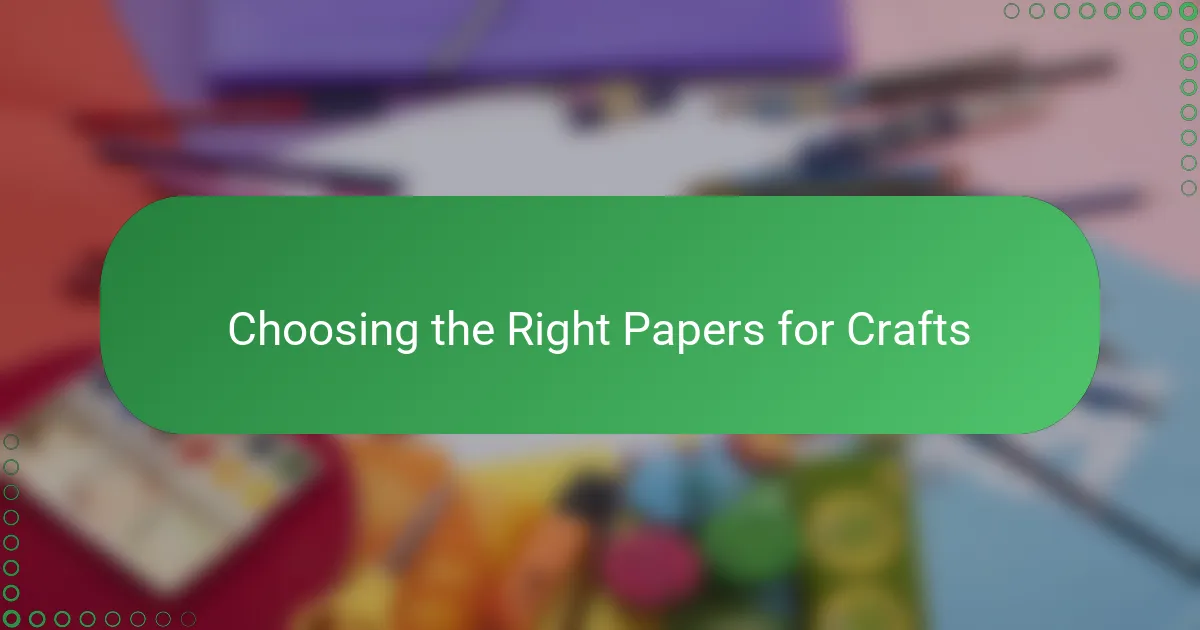
Choosing the Right Papers for Crafts
Choosing the right papers for crafts felt overwhelming at first—I kept wondering, which texture would hold glue best without buckling? From my experience, starting with papers that balance flexibility and strength makes a huge difference; it’s like giving your project a sturdy yet graceful foundation.
I remember the frustration of trying flimsy papers that tore at the slightest touch, and how discovering decoupage papers with just the right weight changed everything. Have you ever had that satisfying moment when a paper smoothly conforms to curves and edges, acting almost like a second skin? That’s the kind of compatibility that turns crafting from a chore into a joy.
Beyond durability, I also look for papers that carry visual interest, because the right design can inspire ideas I hadn’t thought of before. It’s fascinating how a simple pattern or subtle finish can spark creativity, making each project feel personal and alive. Choosing papers is more than a technical step—it’s the first step in storytelling through craft.
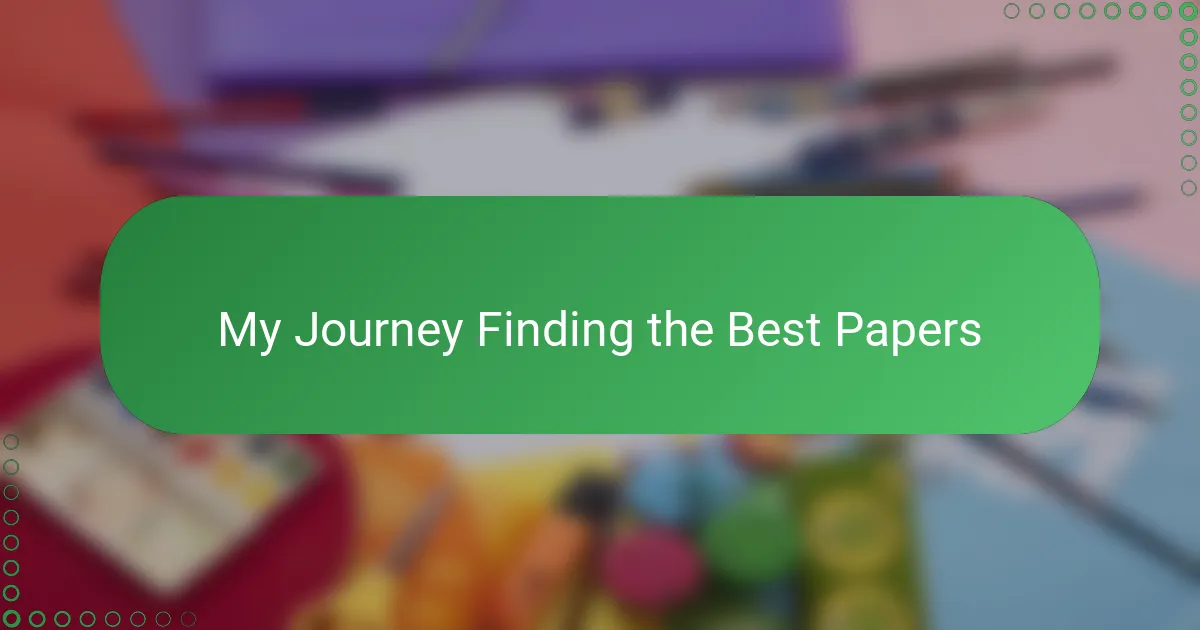
My Journey Finding the Best Papers
Finding the best decoupage papers wasn’t an overnight discovery for me—it was more like a series of small, thrilling revelations. I remember the excitement when I first stumbled upon a paper that wasn’t too thick or stiff but still held up perfectly under glue and paint. Have you ever had that moment when a material just “clicks,” and suddenly, your whole approach shifts?
I went through stacks of various papers, each with its quirks, and many ended up discarded in frustration. It felt like a trial and error dance, but every misstep taught me something new about texture, weight, and how different papers behave when layered. Looking back, those moments of disappointment were just as important as the triumphs—they shaped my understanding.
Then there was the thrill of finding papers with rich patterns that didn’t fade after sealing. It’s funny how those vibrant designs sparked fresh ideas, pushing me to experiment in ways I hadn’t considered before. Isn’t it amazing how the right paper can transform not just a project but your whole creative mindset?
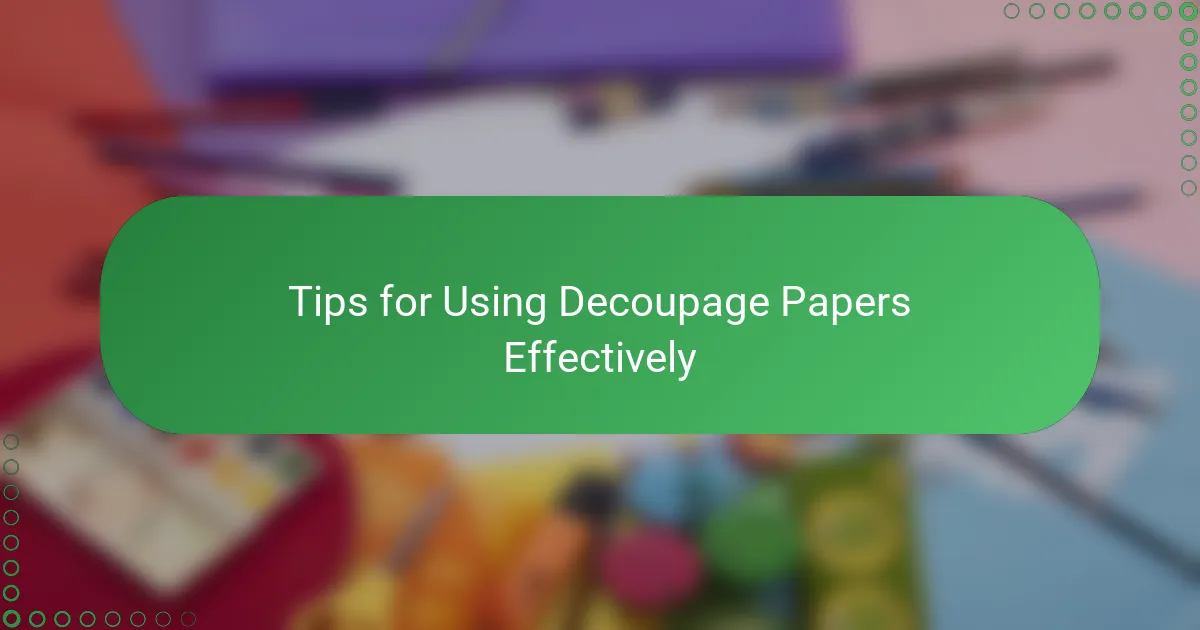
Tips for Using Decoupage Papers Effectively
One thing I’ve learned is to handle decoupage papers gently—have you ever tried smoothing them out only to find tiny tears or wrinkles? Taking your time to carefully position and press the paper with a soft brush or sponge can make all the difference between a messy project and a flawless finish. From my experience, rushing this step often leads to frustration that’s easily avoidable.
I also found that selecting the right adhesive is crucial. Do you know which glues work best without soaking or warping the paper? I prefer using a decoupage medium or a diluted PVA glue because they dry clear and keep the paper flexible. This small tweak helped me maintain those delicate patterns and prevented annoying bubbles from forming.
Another tip that changed my workflow was sealing the finished piece properly. Have you ever noticed how colors can dull or edges start to lift after drying? Applying thin, even coats of varnish not only protects the design but also intensifies the vibrancy. It feels incredibly satisfying to see a project come alive and stay beautiful for years.
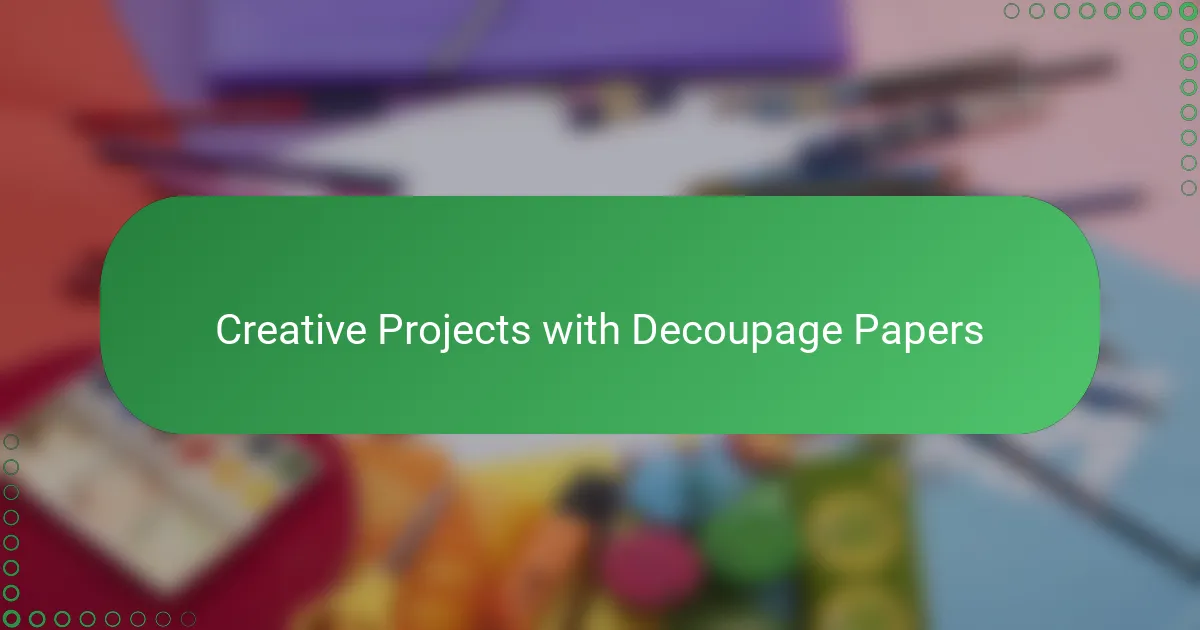
Creative Projects with Decoupage Papers
Creative projects with decoupage papers have been a revelation in my craft journey. I found myself transforming ordinary items—like wooden boxes or glass jars—into personalized treasures just by layering patterned papers. Have you ever experienced that unexpected joy when a simple paper cutout breathes new life into an old object? That moment of seeing something plain turn into a vibrant piece of art feels truly magical.
One project that stands out was decorating a vintage tray with floral decoupage papers. The delicate patterns perfectly complemented the tray’s rustic charm, and the smooth finish made the colors pop. In that process, I realized how decoupage invites a playful kind of experimentation—you can mix and match papers, combine textures, even overlay translucent layers to create depth. Each attempt brought fresh ideas and surprising results.
What excites me most is how decoupage papers open doors to endless creativity without needing complicated techniques. From greeting cards to furniture accents, these papers serve as a perfect canvas to express mood and personality. Have you tried letting your intuition guide your paper choices and arrangements? It’s a freeing experience that turns crafting time into a personal dialogue between you and your materials.
